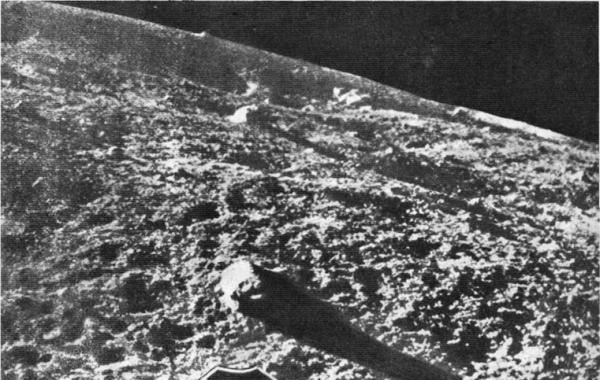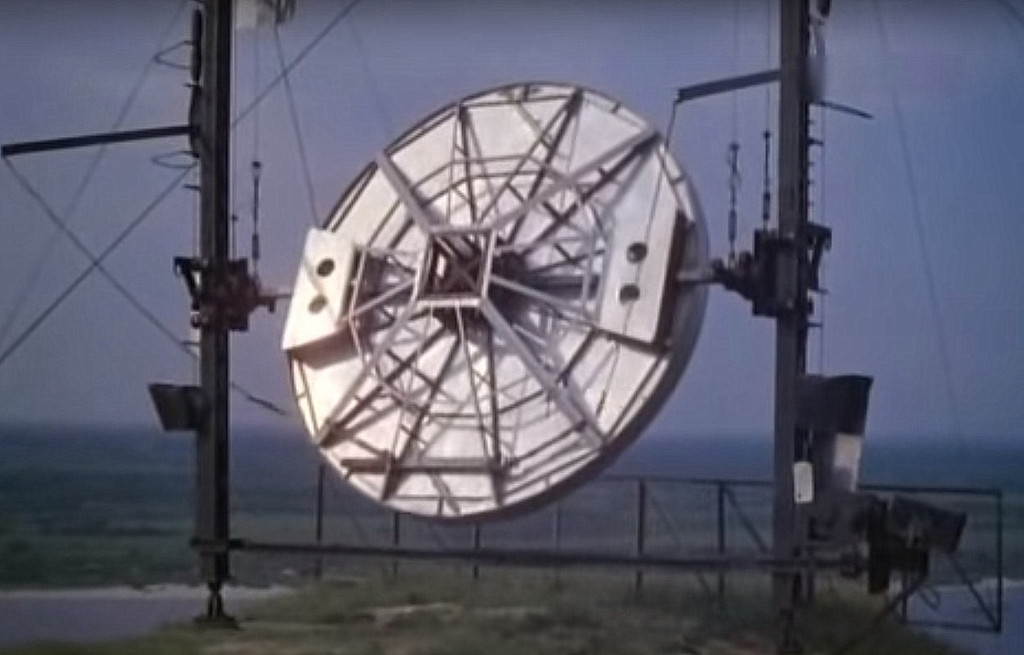50 years to the first pictures from the surface of the moon
 50 years ago, the question of the problem of the lunar soil was solved. Is the solid surface of the moon or covered with a thick layer of dust? Is the spacecraft and the astronaut able to withstand the lunar soil or will they fall into the dusty layer?
50 years ago, the question of the problem of the lunar soil was solved. Is the solid surface of the moon or covered with a thick layer of dust? Is the spacecraft and the astronaut able to withstand the lunar soil or will they fall into the dusty layer?For many years this question gave rise to hypotheses and scientific disputes. It is difficult for us to understand the admiration of our ancestors for this first landing - we have always known that the moon is solid, and the reverse side of the moon can be easily found on the Internet. Similarly, our descendants will be difficult to understand what delights in our time.
It will take some twenty years, and will begin to fly into space on trade union vouchers, people will reach the nearest planets - the Moon, Mars, Venus ... Perhaps we will not live - children will live. But no one will ever repeat what we did. We were the first - and we will remain them forever! And it is so difficult to be the first ...
c / f "Taming the fire"
I suggest a little dip in the beginning of the cosmic age. For completeness of sensations, it is necessary to remind that, unlike the modern Roskosmos, in the press the officials did not tell about their plans. And perhaps right in his comment 22sobaki
It seems that from there, too, the Soviet manner was taken not to report on space launches until their completion:By the time of the stratospheric program, the approach to the coverage of events is also typical of the initial stage of the development of astronautics. After all, such large-scale works for their time as the creation of stratostats "USSR-2", "USSR-3" and "Osoaviakhim-2" managed to be hidden just as many years later the lunar program of the USSR. And the beginning of this secrecy was laid down in a document issued in January 1934 after the crash of the Osoaviakhim-1 stratostat, which said: “To forbid publishing in the TASS and our press any data on flights to the stratosphere, as well as about the stratosphere itself, until on that permission SNK "
Like it or not, the fact remains that the Soviet successes for the citizens of the USSR were an unexpected but pleasant surprise, and unpleasant news rarely came to the press. In the article Space Accident Lessons: The Hard Road to the Soft Landing of the E-6 lozga program talks about 12 launches since 1963, of which only one reached the lunar surface in the evening of February 3, 1966.

And on the morning of February 4, the apparatus began the transfer of the first panorama to Simferopol. Immediately, the first panorama record was
Panoramas were taken not only in Crimea, but also in Britain at the Jodrell Bank Observatory by Bernard Lavel, where he used the world's largest radio telescope to receive. Up to this point he had excellent mutually beneficial relations with the USSR - the USSR used its observations to independently confirm that the USSR really launched the ships to the Moon, Mars, Venus, and Lavel bathed in beams of glory, giving interviews, comments about the Red space program. The USSR was so interested in him and his radio telescope was interested in him that he was invited to the USSR in 1963, where he was shown the Crimean Observatory, and, especially for him, declassified, the space telecommunications complex “Pluto”, presented as a purely civilian scientific complex.
')
Three years later, Lavel, as usual, he observed and reported to the media about the space activity of the Reds. And the whole world, except for the Soviet citizens themselves, watched the attempt to sink the apparatus. This time, the apparatus did not break apart, but continued the transmission and the whole world, again without the majority of Soviet citizens, found out about the new achievement of the Reds. That would be the end of it, but the observatory recognized the signal, finding it very similar to the facsimile transmission. The Daily Express newspaper borrowed a fax machine and actually got pictures, as it later turned out, with distorted proportions. For decency, Lavel tried to ask permission in the USSR to publish, and deciding that “silence is a sign of consent,” he published it.

In the USSR, the next morning was a scandal. And the relationship with Lavel was ruined, he in turn began to tell that the KGB tried to erase his memory during his visit to the USSR. The next lunar device specifically chose the time of image transmission, when the Moon had not yet risen in London, and after sunrise the transmitter switched frequency bands - Lavel needed a clock to replace a different band irradiator, and in Simferopol the antenna switched to another band instantly.
This story is well described, and for those who want to read it in a new way, I recommend an article about the Moon-9 by a good foreign author Andrew LePage. And by the way, the edition of the 1966 Children's Encyclopedia can be cited as an example of an “unexpected event”. An insert about Luna-9 "at the last moment" was glued into its volume.
Old newsreel about Luna-9
I propose to experience the moment itself with the help of the popular science film “The Moon” of 1965 by the famous director Pavel Klushantsev. The film consists of two parts - popular science and science fiction.
The master of special effects created a picture of the future exploration of the moon by mankind. But first he talks about the modern knowledge of the moon, what theories about the moon exist and what astronauts can expect on the surface. Just watch the movie, as if it's only 1965 and you still don’t know anything about the surface of the moon.
Unfortunately for the fate of the film, he lost political relevance with the landing of Americans on the moon after 4 years and disappeared from hire.
After the introduction, describing the Moon and basic information about its geology, based on observations from the Earth, the problem of lunar soil rises in the film from 9:35 in the film - problem No. 1 for future expeditions.

The film features true astronomers who study the moon using various methods, and each of them introduces viewers to the results of their scientific observations.
What is interesting about this episode for the history of astronautics? In 1963, having started to launch the E-6, S.P. Korolev already thought further - about lunar rovers (E-8) and further to lunar bases .

Illustration from the book " Infinity Beckoned: Adventuring Through the Inner Solar System, 1969–1989 ", page 129.
Soon he found those who could solve the problem of extraterrestrial transport - VNII-100. According to the memoirs of engineers, looking for an answer to the question about the lunar soil, they were among these astronomers, the leading Soviet specialists in the study of the Moon. They had to go to Pulkovo, Kharkov, Gorky. According to their recollections, only V.A. Troitsky’s radio astronomer firmly and confidently said that the Moon was solid and not covered with a layer of dust. This allowed discarding exotic types of movers and proceeding to the choice between wheels and tracks.

The frame of the “Artificial Moon” installation , on which he conducted research of the Moon and planets, is still visible in the Crimea in the Karadag nature reserve, as a monument to that “it is so difficult to be the first ...”.


In 1967, the chassis was completely finished and the Lunochkin Scientific and Production Association began to assemble the Lunokhod, which unfortunately did not fly on February 19, 1969, on it.
Source: https://habr.com/ru/post/390113/
All Articles